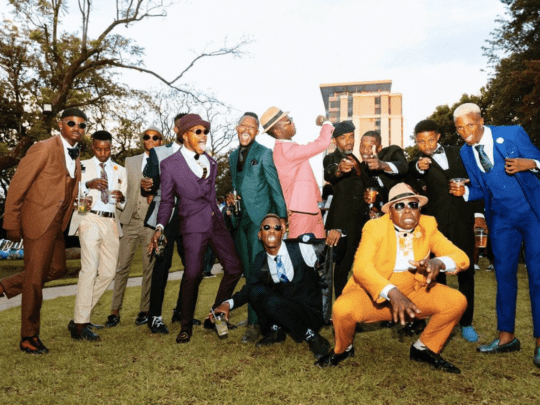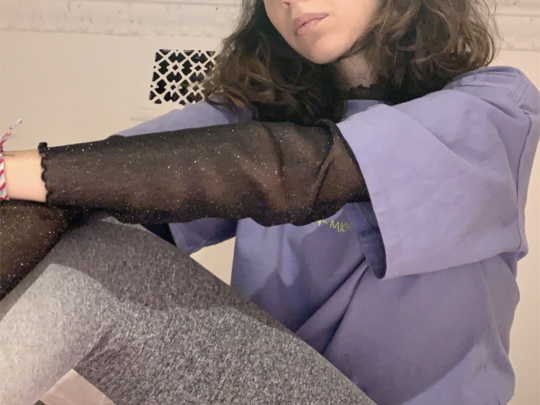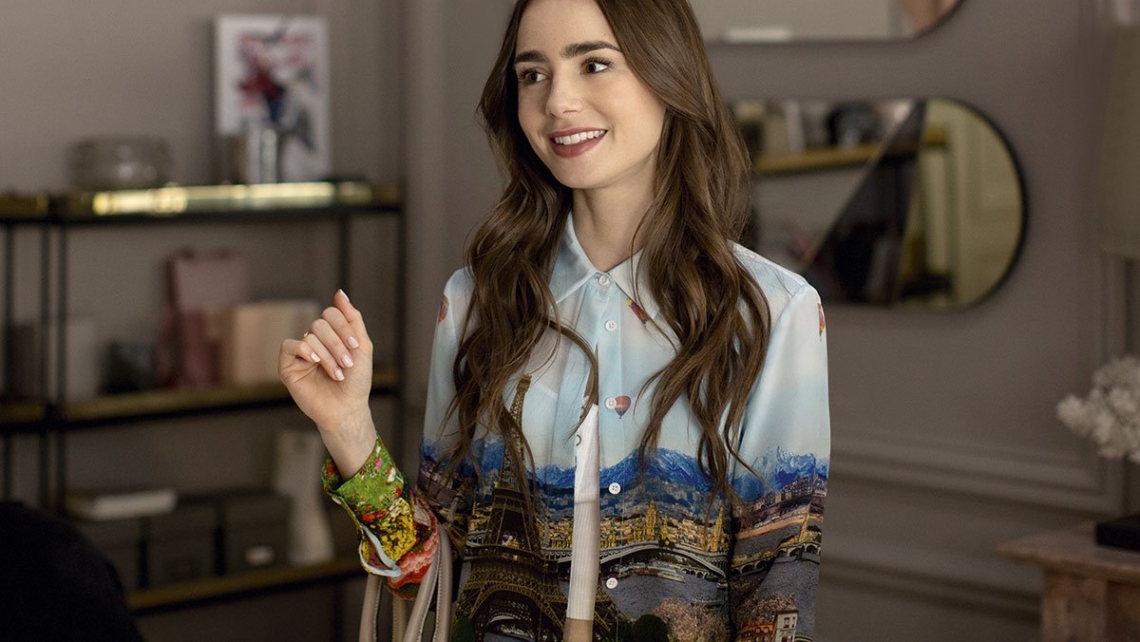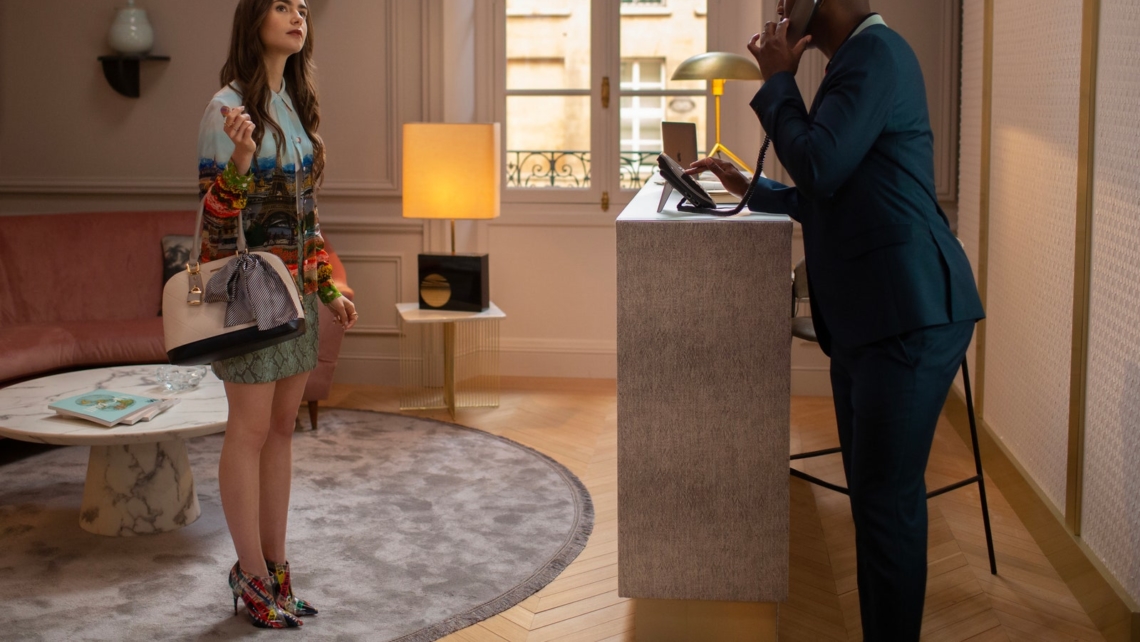Netflix’s series Emily in Paris is still making headlines into 2021. The most talked-about show in fashion during 2020 has landed two Golden Globes nominations, for best TV comedy series and best actress. Cue a flood of complaints from critics, both professional and amateur, who think it’s far from award-winning and should be filed in a category of its own marked ‘Guilty Pleasure’.
Directed by Darren Star, best known for Beverly Hills 90210, Melrose Place and Sex and the City, the show was certainly a ratings hit for Netflix. It jumped to fourth place on the streaming platform’s Top 10 chart in its first week in October.
The plot is straightforward. Emily Cooper, a driven young marketing executive, moves from Chicago to Paris to work for luxury marketing company Savoir, to take on a job that was meant for her boss. That in itself is unusual, but there’s even more to come: Emily’s not only there to join the team, but to transform the world of PR in France with her American perspective. How? Easy. All it takes is her limitless knowledge of social media. No spoken word of French required.
In true Miranda Priestly style, Emily’s new boss Sylvie greets her with a frosty welcome, as do the rest of the Savoir team. However, the protagonist quickly becomes a successful Instagram influencer and gives Savoir’s clients ideas that are perfect for their needs. It’s a sugar-coated story of a young woman’s fashionable life, full of rainbows, unicorns and the occasional bump in the road.
But is this what the fashion industry looks like? Not really. Emily in Paris is the epitome of a cliché, representing fashion, France and even American travellers in a wholly unrealistic way. The show’s strenuous stereotypes have earned it a barrage of bad reviews. From well-established editors to fashion students, everyone in the industry disagrees with Emily’s lifestyle and wardrobe, not to mention the way in which French people are portrayed on the show: mean and desperate for an extramarital affair.
“I couldn’t get through the first 10 minutes,” says a senior American journalist who asked to remain anonymous. “It made me want to jump out of my window.” The show is far too cheesy and unrealistic to warrant her time. “I’d rather be reading a book than watching a Kenzo dress that no one would wear around,” she says.
Emily’s age has also been a hot topic. When Lily Collins, the English-American actress who plays the marketing executive, revealed that she interprets her character to be around 22, she set the internet on fire. The issue wasn’t just her age, but everything that she’s achieved so early on in her life. “She’s had enough experience at her company in Chicago to have earned the respect of her boss. She’s a smart cookie and really innovative – and this is not her first rodeo doing what she does. She’s gone to school for this, and she’s completed internships,” says Collins. But, no matter how smart, innovative and lucky Emily is, the age of 22 is beyond implausible. She must be around 30.
Emily’s career as an influencer is also a fantasy. Working as a social media editor has taught me that, on Instagram, consistency is key. And that’s something Emily does very well – she shares every single moment of her life, including a photo of dog poo with the hashtag #MindTheMerde. But gaining more than 25,000 followers in just a couple of weeks? It’s not going to happen. Unless you are already famous, it takes much more time to build a large audience on social media.
However, the show should only be seen as a depiction of ‘the fashion dream’. “It depicts the idealised image people have about the fashion world: frivolity, glamorous parties, and gorgeous and successful people who can afford a collection of Chanel bags before turning 25,” says Celia Fernández-Carnicero, social editorial coordinator and fashion writer at Vogue Global Network. “It is important to tell real stories and above all, to balance the expectations of young people willing to work in fashion. But we should not worry about these fairy tales as long as we do not lose sight that they are quite far from reality. At least for 99 per cent of mortals.”
Mona Tehrani, junior social and community editor at The Face, agrees: “It is very much how the average all-American girl or whatever imagines the industry works. It’s made for the people – like Emily says in the series – that are on the outside looking in, who are probably the same people who liked her outfits. That’s why it’s so full of clichés. If it accurately depicted the fashion industry, Emily would have been fired in episode one. And every episode since then.”
Fernández-Carnicero found a job exceptionally fast, although not as miraculously fast as our fictional Emily. Even before she graduated in 2017, she joined the content and editorial team at Asos, a position that led to her current role. “Even though Central Saint Martins’ name has a lot of weight in the industry, I never expected to find a job before finishing my MA,” she says. “The stars aligned for me.” And so they did for Tehrani. Right after she graduated last December from Central Saint Martins, where she completed an MA in Fashion Journalism, she landed her current position at The Face. That’s not how it normally works.
Trey Taylor, US editor at The Face, didn’t have a smooth journey in fashion media. Looking for his dream job, the Canadian journalist moved to the UK, but his visa put an expiry date on his stay. Even with experience at magazines like Dazed, Taylor couldn’t find a company that would sponsor his work visa, forcing him to return to Canada. It’s an extra barrier that keeps many international students out of the job market – companies won’t make the effort, no matter how skilled you are. Except for the fictional world of Savoir, where no one cares about Emily’s visa apparently.







